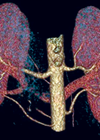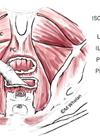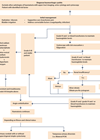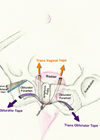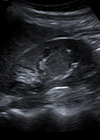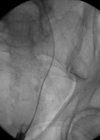Features archive for 2015
Surgical video – part 2: Tips on how to edit and create a finished surgical video for teaching or publication
A well-made and informative video can be one of the most valuable promotional tools for a department of urology. Having to resort to an external commercial source to produce a video can be prohibitively expensive. With the extensive computing power...
Sepsis syndrome in urology
There are approximately 100,000 cases of sepsis per year in the UK, of which 37,000 result in death (this is more than prostate cancer, breast cancer, HIV / AIDS and road traffic accidents combined). Urosepsis is defined as sepsis caused...
The emerging role of physician associates in urology
The physician associate (PA) is a new role in the NHS which has expanded across medical and surgical specialties to include urology. In the USA, it has long been an established field of practice where physician assistants work autonomously within...
Radiological appearances of renal vascular anatomical variants
The purpose of this article is to explain and illustrate common renal vascular variants that can be depicted with imaging. Renal vessels commonly present a wide range of variations [1]; before major renal or vascular surgery is undertaken, accurate portrayal...
Physiotherapy first for pelvic floor dysfunction
Physiotherapy should be included in first-line management options for pelvic organ prolapse and urinary incontinence in women [1,2]. Additionally, referral to physiotherapy is widely practised for the management of urinary incontinence in men, faecal incontinence, defecation disorders and various pelvic...
An algorithm for the management of haemorrhagic cystitis
Haemorrhagic cystitis (HC) can be one of the most difficult conditions to treat in urological practice. It is characterised by intractable bleeding from the bladder and may be acute or chronic. The most frequently reported causal factors are radiotherapy (RT)...
Urinary incontinence in women – part 2: management
In the second part of our comprehensive overview of urinary incontinence (UI) the authors explore the plethora of treatment options for this complex condition. (Part 1 available here). Conservative management Initial treatment of incontinence should be conservative. Caffeine reduction and...
Radiological appearances of non-vascular renal anatomical variants
Anatomical variants of the renal tract are common and, although often asymptomatic, may present with complications. It is essential to identify anatomical variants, as this may have an impact upon surgical planning and management. This article aims to demonstrate radiological...
Meeting in the middle: a review of the rendezvous technique to treat impassable ureteric strictures and transected ureters
Introduction Complex ureteric strictures present a significant challenge with some patients undergoing multiple separate urological and radiological procedures to try to cross a stricture without success. Cross-departmental collaboration with uroradiology may allow a decrease in the number of separate interventions....
Reflections on 20 years as an Army Reserve doctor: live a life less ordinary
It seems a very short time ago that my predecessor recruited me into my regiment as a surgical senior house officer during a varicose vein operation in a cottage hospital in Stroud, informing me that I would be only the...
Prostate cancer survivorship: a new path for uro-oncology
Over two million people in England have a diagnosis of cancer [1]. Of this figure, over 250,000 have been diagnosed with prostate cancer [2]. However, during the next decade, a rapid increase in the number of new cancer diagnoses, as...
Urinary incontinence in women – part 1: terminology and diagnosis
Introduction Urinary incontinence (UI) is the involuntary and often embarrassing leakage of urine. It is a condition that is both under-reported and under-diagnosed, and when reported it is, unfortunately, often not assessed and managed adequately. Incontinence of urine is encountered...



